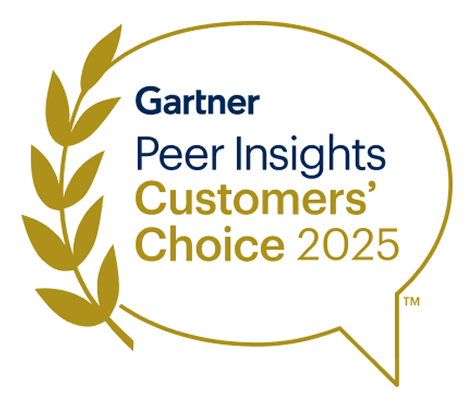Manage Data Security and Compliance Risks with DSPM - A Deep Dive into Common Data Regulations
Cloud innovation necessitates migrating more workloads to the cloud, creating an exponential increase in data volume. As a result, data proliferation and sprawl make it almost impossible to gain the right visibility into the cloud infrastructure to identify sensitive data and its security posture. What’s more, data owners constantly load and move data, while security analysts and compliance officers have the responsibility to enforce regulations and monitor these actions. This dynamic presents challenges for data security professionals and Governance, Risk, and Compliance (GRC) teams in managing complex compliance requirements across different regulatory frameworks.
Understanding and accurately classifying cloud data is a critical foundational step towards maintaining a stable compliance posture against regulatory compliance framework benchmarks.
Here are a few examples of how DSPM, with its advanced and granular visibility into complex cloud environments, can help enterprises to efficiently detect sensitive data and accurately quantify the data risk:
- Not all sensitive data resides in data stores: Data is scattered across various services from different vendors, including managed cloud services, containerized environments, SaaS services, and hosted cloud drives. DSPM has the ability to detect and classify data at the most granular level (including tables and objects). This ensures that no sensitive data is left undetected, when monitoring for compliance gaps.
- Defining data classes plays a pivotal role in quantifying data compliance risks: Accurate classification means having very clearly categorized data classes that relate to the relevant compliance frameworks. A scenario in which multiple data classes reside in a single data store, will expand the data attack surface, raising the risk score. For instance, a database might contain Social Security Numbers (SSNs) and Personal Addresses, or Credit Card Numbers and CVVs. Such data stores are often replicated and moved between production and development environments, and their log files may contain sensitive information. That’s why DSPM is an invaluable tool to proactively scan and detect these issues on an ongoing basis.
- Always track the security posture of your data stores: For instance, keeping PCI data outside of your PCI compliant environment or storing PII data outside of the designated region could create vulnerabilities. This often happens when a testing or debugging environment is created from production data.
Lets take a look at the specific requirements of some common compliance frameworks and how DSPM will automatically discover, classify, quantify the data risk and alert on issues to maintain a strong and stable compliance posture.
PCI-DSS
The Payment Card Industry Data Security Standard (PCI DSS) comprises security protocols created to guarantee the secure handling of credit card information by companies engaged in acceptance, processing, storage, or transmission of such data.
Here are some of the issues that a DSPM platform will proactively detect, to support the PCI-DSS requirements of safeguarding cardholder data and implementing robust access control measures to fortify the security environment:
- Identify inadvertent leaks of Primary Account Numbers (PAN) into log files
- Detect instances where PAN lacks proper encryption at rest or is stored without being masked
- Pinpoint the storage locations of encryption keys, ensuring that they are not stored in undesignated areas
- Prevent unauthorized access to PCI data
GDPR
GDPR, a regulation created to safeguard the privacy of EU citizen data, sets stringent standards applicable to both EU and non-EU organizations. It mandates adherence to principles such as data minimization, requiring organizations to collect only the necessary data for their declared purposes. Additionally, GDPR demands the timely correction, deletion, or termination of inaccurate data and imposes restrictions on the duration of data retention. Organizations must ensure data protection, privacy, and the ability to substantiate GDPR compliance.
Here is how DSPM proves instrumental in aligning with GDPR requirements:
- Detect Personally Identifiable Information (PII) stored across various cloud accounts, datastores and SaaS providers
- Ensure adherence to the 'Data Minimization Principle' by enabling access to authorized users only
- Proactively alert organizations to instances where sensitive data lacks safeguards against potential loss or theft
- Ensure all regulated data meets the specified data retention and auditing requirements
HIPAA
HIPAA, the Health Insurance Portability and Accountability Act, is a United States compliance framework designed to safeguard the health information of patients. Covering privacy, security, breach notifications, and enforcement rules, HIPAA imposes strict regulations on Protected Health Information (PHI), encompassing identifiable details such as names, addresses, birthdates, Social Security Numbers (SSNs), and medical records. Guidelines include implementing access control, audit control, integrity control, and transmission security for electronic PHI. Electronic Health Record (EHR) systems, considered the future of medical records, must adhere to all security rules and HIPAA guidelines.
This is how DSPM is indispensable in achieving HIPPA compliance:
- Identify all Protected Health Information (PHI) stored in cloud accounts, including patient identifying details such as names, addresses, birthdates, SSNs, phone numbers, test results, and health insurance information
- Scan various data repositories to locate stored PHI, including managed databases, structured files, documents, and scanned images
- Ensure all data storage for PHI has proper access control, logging, backups, and security measures to prevent unauthorized access, loss, or theft
DSPM's advanced visibility into the entire multi-cloud data estate, combined with its classification accuracy, ensures no data is overlooked, even at the most granular level, automatically strengthening compliance posture and readiness.

Here you can see how Sentra measures an organization’s compliance posture in relation to industry benchmarks.
To learn more, book a demo and talk to a DSPM expert.










.webp)



